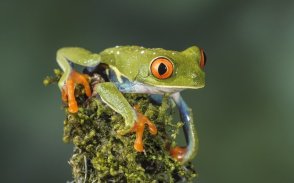
Amphibians Facts
- Amphibian means two-lives. They spend their lives in water and on land.
- Amphibians are cold-blooded, ectothermic animals. They also come under the class vertebrates (meaning they have backbone or spine).
- Amphibians breathe through skin and they go through metamorphosis.
- Amphibians begin their life in water with gills and tails. They develop lungs and legs as they grow for their land life.
- 60 million years ago amphibians were the dominant terrestrial animals on earth.
Classification of Amphibians
Scientific classification
- Kingdom : Animalia
- Phylum : Chordata
- Subphylum : Vertebrata
- Superclass : Tetrapoda
- Class : Amphibia
Amphibians are cold blooded animals that belong to the class Amphibia which comprises of three orders. Amphibians are the most important class in the vertebrates group. Since they are the first tetrapods (four-legged vertebrates) The amphibians can be divided into three main orders. Each having its own species. The orders are as follows:
- Anura
- Caudata
- Gymnophiona
Anura order
Anura is also called as Salientia. The species that belong to this order are
The word "Anura" means "absence of tails". As the word implies frogs and toads do not have tails. Among the three orders that make up the amphibian class Anura is the biggest order. It has about 4500 species. These species are different from other two species since they have four legs and reproduce through external fertilization. Though frogs and toads belong to the same order they have different characteristics.
Gymnophiona order
Gymnophiona is also called as Apoda. The specie that belong to this order is
This typical amphibian specie resembles large worms and lack limbs. About 50 species of amphibians belong to this order. They are mostly found in the tropical forest and fresh water sediments. These are aquatic in nature and are found in Africa and south Asia and America. Gymnophiona species have short tails but lack the appendages.
Caudate order
Caudate is also called as Urodela. The species that belong to this order are
About 500 species belong to this order. The species salamanders and newts are unique. The term Caudata means "tail". The species in this category have tails and four limbs. The presence of tail helps to easily identify the species of Caudata and Anura.











